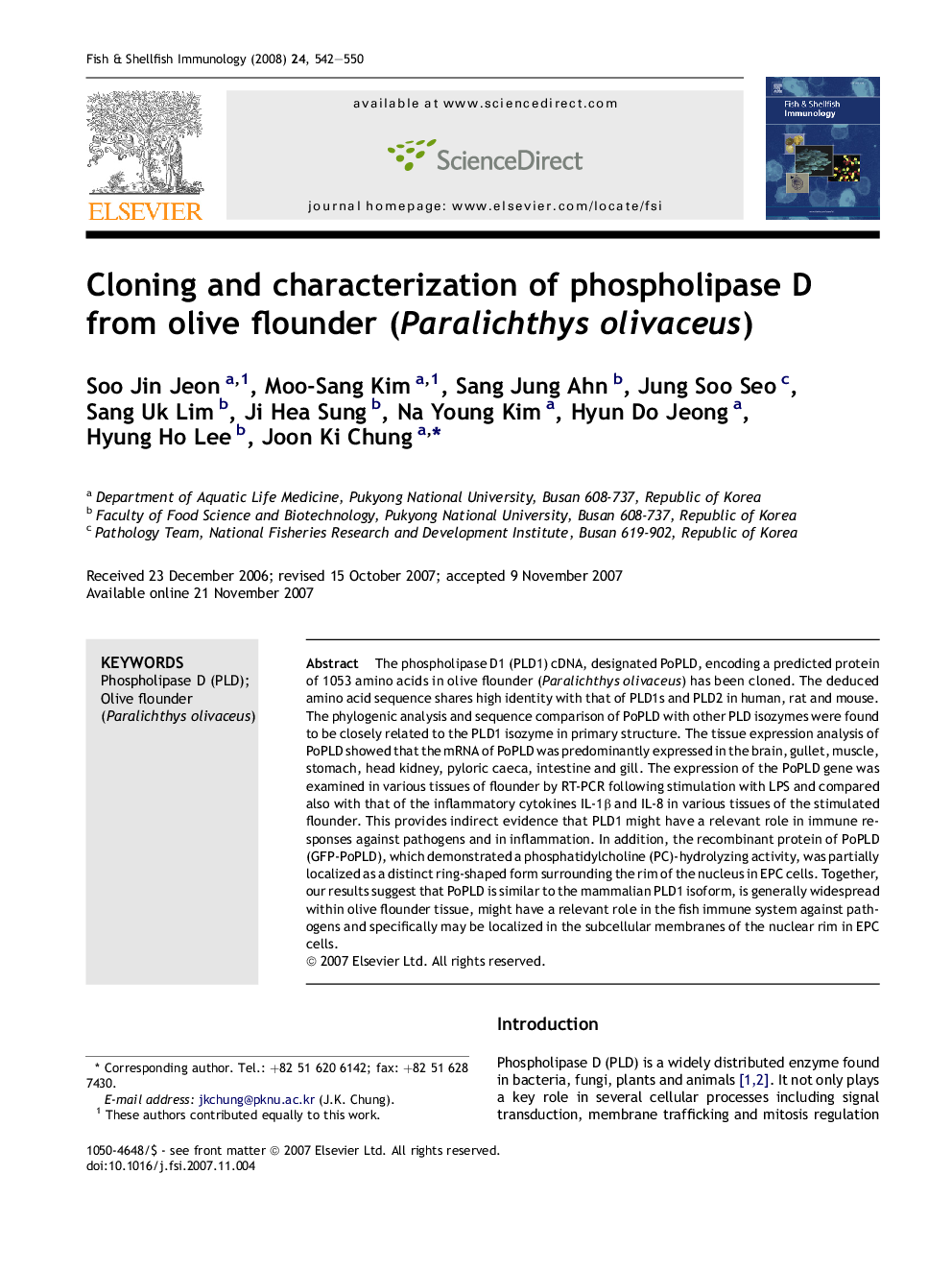| Article ID | Journal | Published Year | Pages | File Type |
|---|---|---|---|---|
| 2433447 | Fish & Shellfish Immunology | 2008 | 9 Pages |
The phospholipase D1 (PLD1) cDNA, designated PoPLD, encoding a predicted protein of 1053 amino acids in olive flounder (Paralichthys olivaceus) has been cloned. The deduced amino acid sequence shares high identity with that of PLD1s and PLD2 in human, rat and mouse. The phylogenic analysis and sequence comparison of PoPLD with other PLD isozymes were found to be closely related to the PLD1 isozyme in primary structure. The tissue expression analysis of PoPLD showed that the mRNA of PoPLD was predominantly expressed in the brain, gullet, muscle, stomach, head kidney, pyloric caeca, intestine and gill. The expression of the PoPLD gene was examined in various tissues of flounder by RT-PCR following stimulation with LPS and compared also with that of the inflammatory cytokines IL-1β and IL-8 in various tissues of the stimulated flounder. This provides indirect evidence that PLD1 might have a relevant role in immune responses against pathogens and in inflammation. In addition, the recombinant protein of PoPLD (GFP-PoPLD), which demonstrated a phosphatidylcholine (PC)-hydrolyzing activity, was partially localized as a distinct ring-shaped form surrounding the rim of the nucleus in EPC cells. Together, our results suggest that PoPLD is similar to the mammalian PLD1 isoform, is generally widespread within olive flounder tissue, might have a relevant role in the fish immune system against pathogens and specifically may be localized in the subcellular membranes of the nuclear rim in EPC cells.
